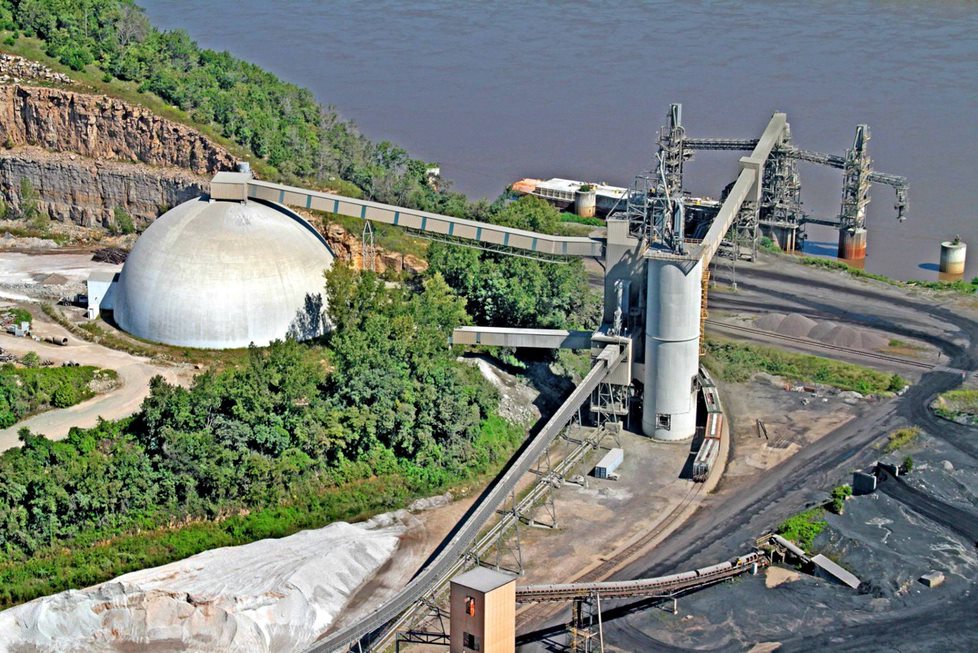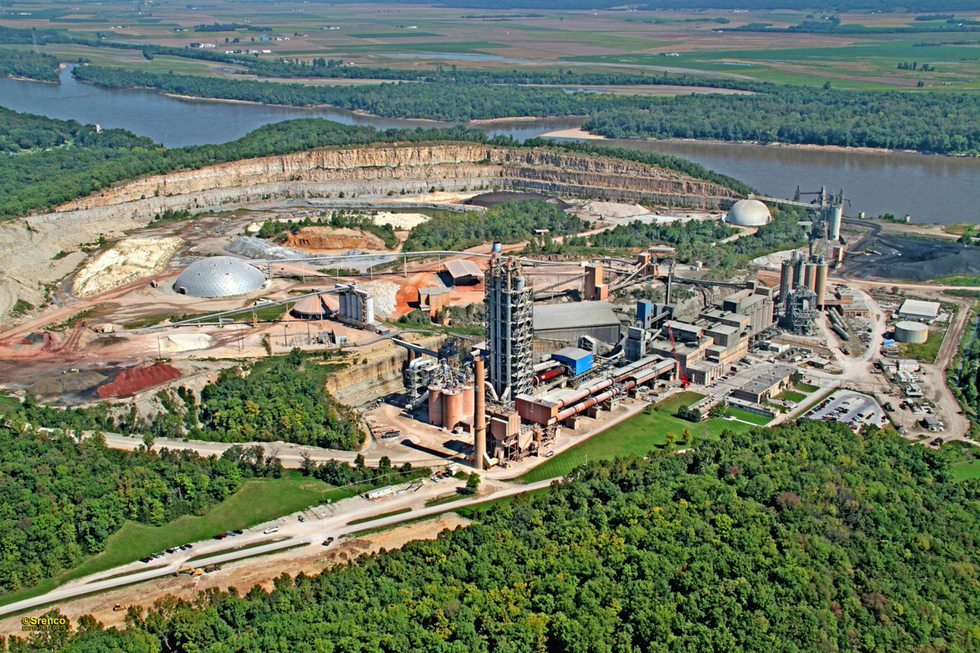Festus, MO
The history of River Cement starts with mining. Around 1800, a duelist, John Smith T. (the T stood for Tennessee, where he originated) bought 4,500 acres in this area, originally called Selma, for mining lead and manufacturing guns. Smith T had a long career of violence and intimidation. It was rumored that he had killed 15 men. Many duels were fought in this area, hence the name “Doolin Hollow Road”, and on an island in the Mississippi River.
In the early 1850’s, John Smith T gave the 4,500 acres to his granddaughter Julia and her husband, Ferdinand Kennett. In 1854, Kennett’s castle was built just north of our now existing cement plant. The Kennett’s lived in the castle prior to and after the Civil War. During the Civil War, they moved to St. Louis due to ships (Confederate and Union) opening fire as they moved up/down the Mississippi River. The Kennett’s eventually sold the property to Robert Brooking (of Brookings Institute, Washington DC and Brookings Hall at Washington University in St. Louis). In 1902, Brooking sold the property to W.K. Cavanaugh, who was rumored to host outlandish parties. Then in 1918, William Schock took ownership. In 1953, Mississippi River Fuel Corporation purchased the 4,500 acres. William Marbury was president at the time. Mississippi River Fuel Corporation was the parent company of Missouri Pacific Railroad. Mississippi River Fuel Corporation included the 1st interstate gas pipe line company of America. The pipeline ran from North of Monroe, Louisiana, to St. Louis (1928-1929). Under William Marbury, MO-Pac diversified into multiple companies. Of these companies, an ammonium nitrate plant was built in 1954 on 1,000 acres of the original 4,500 acres and in 1963 a cement plant.
The cement plant, then known as River Cement Company, took advantage of the vast reserves of Kimmswick and Plattin limestone that follows the banks of the Mississippi River. These formations of limestone have been referred as the “White Cliffs of Selma” in writings of Mark Twain. Also, in Mark Twain’s “Innocents Abroad,” he compared the bluffs to the Pyramid of Cheops.
River Cement Company started operation in 1965 with one long dry kiln. Strategically placed on the Mississippi River, cement was shipped to five distribution terminals from St. Louis to Texas. A second kiln line was added in 1968 for a total annual cement capacity of 1.4 million tons. In 1973, William Marbury died and Downing Jenks took over as Chairman of the Board and later re-named Mississippi River Corporation to Missouri Pacific Corporation. In 1978, the cement plant was sold to Buzzi Unicem USA.
In 2001, approximately 1,000 acres of property was acquired by the cement plant to provide substantial limestone reserves. In 2005, construction of the new pre-heater pre-calciner kiln initiated. In July 2009, the new pre-heater pre-calciner kiln was brought online and the original long dry kilns were permanently shut down.
The new line has capacity of producing 2.5 mtpy clinker capacity and 2.7mtpy cement capacity.
The plant serves markets throughout the Midwest (Texas, Oklahoma, Kansas, Arkansas, Louisiana, Mississippi, Alabama, Georgia, Missouri, Tennessee, Kentucky, Illinois, Ohio, Iowa, Wisconsin and Michigan). Shipping occurs via the river (80%), rail (15%) and truck shipments.



